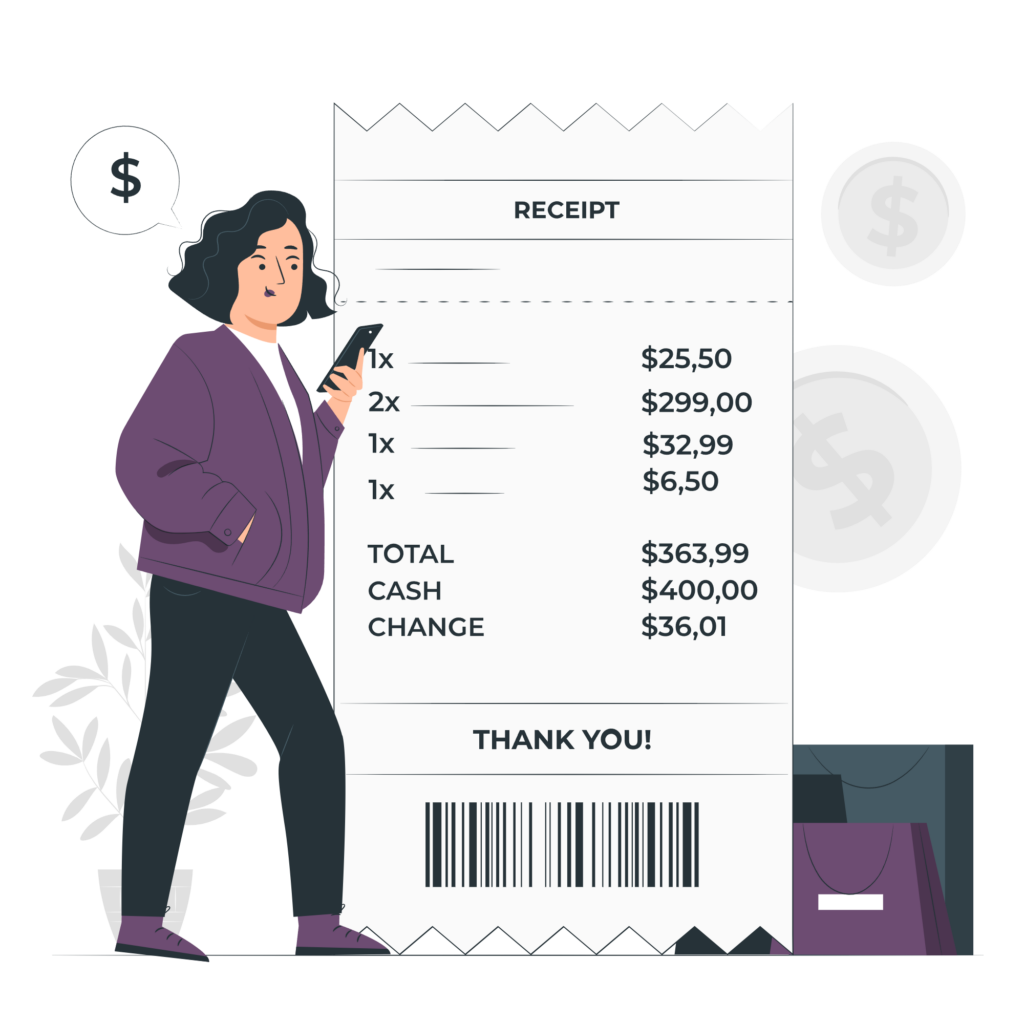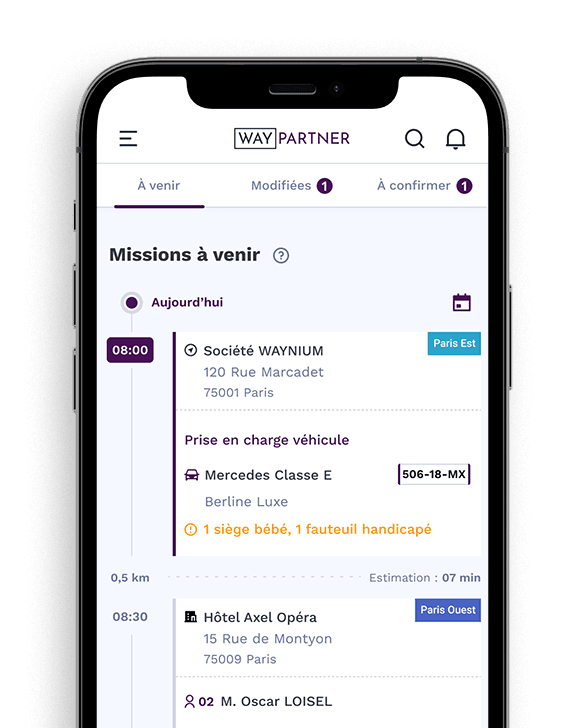The VTC practical test is the decisive step in obtaining your professional licence. It's not just a question of knowing how to drive: the test also assesses your sense of service, your organisation and your professionalism.
With the 2025 reform, the requirements have been tightened. The emphasis is on service quality, eco-driving and mastery of digital tools. Understanding what is expected and preparing seriously is the best way to avoid failure.
The essentials in a nutshell
No time to read the whole article? Here's a quick summary of the key points:
-
The exam takes place at the Chambre de Métiers et de l'Artisanat (CMA) using a dual-control vehicle.
-
Two examiners are present: at the front, an expert in driving and safety; at the back, a member of the CMA playing the customer.
-
Procedure: draw up a mission → 6 minutes' preparation (GPS, estimate, map) → drive for 20 to 30 minutes → invoice → return to the CMA (noted).
-
Points system: 3 points for the route; 10 points for driving/safety; 5 points for customer relations/tourism; 2 points for invoicing.
-
Pass: at least 12/20 and no eliminatory errors.
-
Three attempts are possible in the year following successful completion of the theory test.
Understanding the test
To apply, you must have passed the theory test (mark ≥ 10/20), which is valid for 12 months.
Course of the examination day :
- Meet and greet at the CMA with your dual-control vehicle.
- Presentation by the jury (2 examiners).
- Draw for a mission scenario (one-way, round-trip, provision).
- 6-minute preparation phase (GPS itinerary, quote, map location).
- Professional driving situation (20-30 min) with tourist questions.
- Billing at the end of the journey.
- Back to the CMA, still rated.
- Official end only when the vehicle is parked and the engine switched off.
Composition of the jury :
- Front (passenger side): driving expert, responsible for safety and compliance with the Highway Code.
- Rear: a member of the CMA or sometimes a police officer, playing the role of the customer. He assesses the relationship, comfort, billing and local knowledge.
Scale :
- Preparation and route: 3 points (eliminatory if failed).
- Driving, safety, flexibility: 10 points (eliminatory if serious fault).
- Customer relations and tourist information: 5 points.
- Billing: 2 points.
- Minimum grade required: 12/20.
What the 2025 reform changes
The aim of the reform is to enhance the quality of the profession. In concrete terms :
- More attention to customer relations and presentation.
- Eco-driving integrated into the assessment criteria.
- Increasing importance of digital tools (GPS, invoicing).
These points do not change the structure of the test, but increase the level expected.
Preparing effectively
Material and organisational preparation play a key role.
Dual control vehicle :
- Hire compulsory.
- Book ahead and, if possible, pick it up the day before to familiarise yourself with the template and controls.
Essential equipment on board :
- Smartphone with stable stand and charger.
- Paper road map of the test area (omissions = disqualification).
- Calculator.
- Draft sheet and pen.
- Quotation and invoice books pre-filled with your information.
Documents to be prepared :
- Valid ID and driving licence.
- Invitation to the exam.
- Vehicle registration document, insurance and rental contract.
Presentation:
- Sober and neat professional attire (suit/tailor).
- Clean vehicle.
The 6-minute phase: a simple method
This is a timed stage where the jury observes your method and composure.
Recommended organisation:
- First 3 minutes: enter the GPS addresses, obtain the distance and draw up a clear quote.
- Last 3 minutes: Locate the start and finish points on the paper map.
Key points:
- Make a note of the names and addresses given orally (repeated no more than twice).
- Credible km rate, clear and professional quote.
Professional driving: safety and flexibility
This is the heart of the scale (10 points). The jury expects you to drive safely and comfortably.
The 4 most common eliminating fouls:
- Stops : full stop compulsory, even if the line is deleted.
- Priorities on the right : systematic vigilance at every intersection.
- Pedestrian crossings : total priority as soon as a pedestrian indicates his intention to cross.
- Lights : red eliminatory, orange to be approached with caution (better to stop).
Smooth driving :
- Progressive acceleration and braking.
- Strict compliance with the Code.
- Anticipation to guarantee comfort and safety.
Customer relations and local culture
Even if this part represents "only" 5 points, it can make all the difference.
What to look out for:
- Take charge: doors, luggage, stop in a safe place.
- Comfort: offer water, temperature control, charger.
- Tourist questions: find out about the main sites (monuments, museums, stations) within a 20-minute radius of the CMA. Answer briefly while keeping your concentration on the road.
Billing and return journey
Invoice :
- Must include the elements of the quotation with the amount including VAT.
- To be given personally to the customer-examiner.
Return journey :
- Always noted, until the engine stops.
- A serious fault on this route cancels out everything else.
Eliminatory errors and common mistakes
- Intervention by the examiner on the dual controls (pedals/steering wheel).
- Serious breaches of the Highway Code (stop signs, traffic lights, pedestrians, right of way).
- Forgotten paper road map.
- Inability to produce a quotation or invoice.
- Unprofessional attitude.
Conclusion
Passing the VTC practical test is based on three pillars:
- Upstream preparation : full equipment, ready documents, flawless organisation.
- Safe, smooth driving The company's core values: absolute priority to safety, strict compliance with the Code and passenger comfort.
- Consistent professionalism : neat dress, attentive service, rigour until the end of the return journey.
With method and seriousness, this exam becomes an achievable step towards obtaining the professional card.
Glossary
Here are some useful terms to know and understand:
-
CMA Chambre de Métiers et de l'Artisanat, the organisation that runs the exam.
-
Dual control vehicle Car equipped with pedals on the passenger side so that the examiner can intervene.
-
Availability service billed by time (not by journey).
-
Quote A document indicating the estimated price of the race according to the scenario.
-
Invoice incl. VAT Final price: document given at the end of the race, indicating the final price including VAT.
-
Eco-driving driving style designed to reduce fuel consumption and pollution.
-
Eligibility Validation of the theory test, valid for 12 months.










